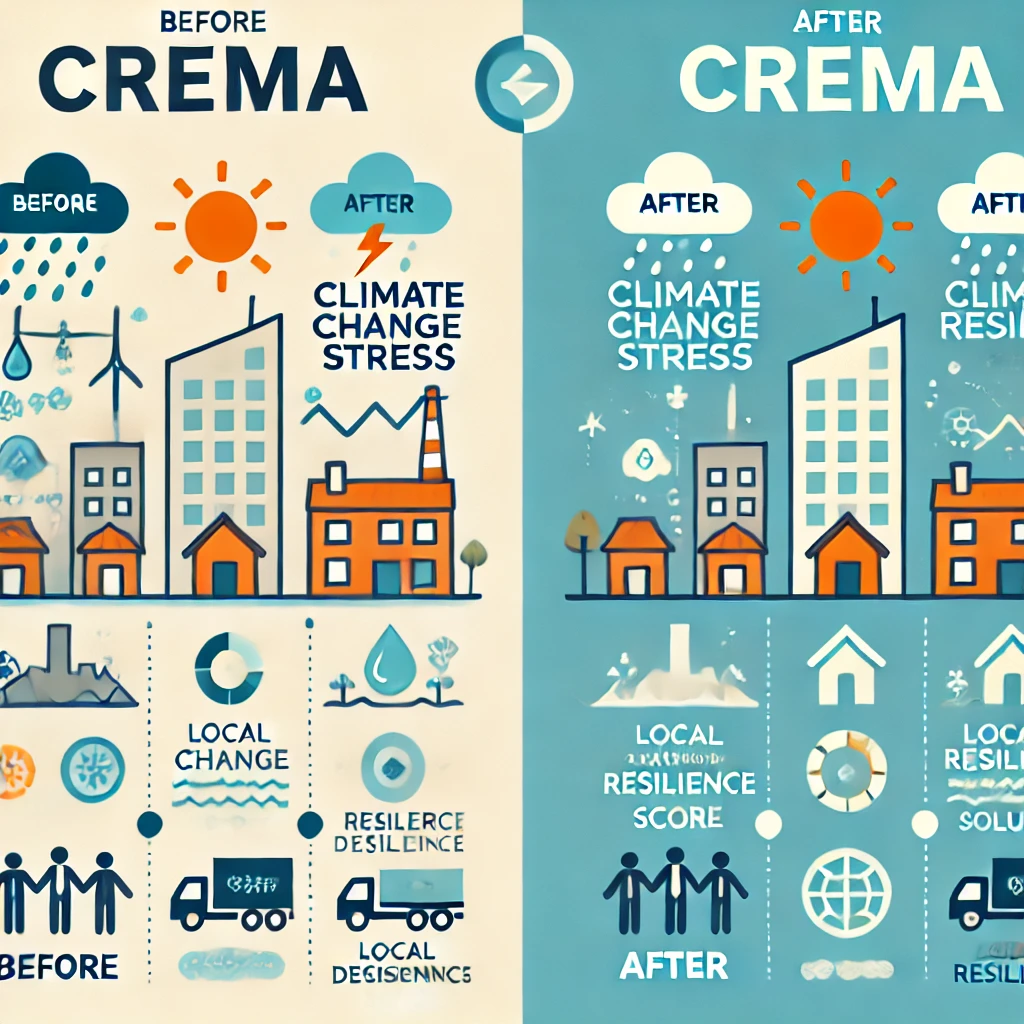Planning for Resilience: MULTICLIMACT’s CREMA Tool to Help Cities Adapt to Climate Change
12. September 2024 | News

As climate change and natural hazards continue to threaten the built environment, the MULTICLIMACT project is making strides towards providing local authorities and communities with a powerful tool to assess and enhance resilience. Here’s how the CREMA tool helps cities to protect the built environment.
The MULTICLIMACT project aims helping cities and communities prepare for the challenges brought on by climate change and natural hazards. At the heart of this effort is the Climate REsilience Maturity Assessment (CREMA) tool, a system designed to assess how resilient buildings, historic areas, and other urban assets are, while also providing a pathway for improving their resilience.
The CREMA tool is like a scorecard for buildings and areas, helping us see how well they can handle problems like extreme weather caused by climate change. It checks how safe and prepared they are now, then suggests ways to make them stronger and safer in the future. It’s designed to help local leaders and communities make smart choices to protect their surroundings. The CREMA tool is in development, and here’s a look at what’s been achieved so far.
Collaborative Efforts
The task of planning and designing the CREMA tool is a collaborative effort led by RINA Consulting, with the help of project partners and demonstration sites. This collaborative effort ensures that the tool is designed in a way that addresses a wide range of needs and challenges faced by cities across Europe.
A Tool for All
The CREMA tool is being designed with a specific purpose in mind: to support decision-makers, local authorities, and communities in making informed choices to adapt to climate change. It will help evaluate the current resilience of assets, such as buildings or city districts, and suggest improvements that are both effective and cost-efficient. The goal is to provide clear insights into how the MULTICLIMACT toolkit solutions can enhance resilience and reduce risks from environmental hazards.
Early Progress
From the outset, the team has focused on defining a methodology to accurately calculate a resilience score for each asset. This score will reflect how prepared a building or area is to handle potential climate-related challenges. This approach helps assess the current state of resilience for an asset, whether it’s a building, cultural heritage site, or even an entire neighbourhood.
Looking Ahead
Moving beyond the present state, the team is working on defining how the resilience of an asset can be improved. This is done by applying solutions from the MULTICLIMACT toolkit, with a particular focus on energy retrofit solutions. The team, with a human-centred approach, is guiding decisions to ensure the tool is not only practical but also meets the needs of the people who will be using it.
The Human Touch
A critical aspect of the CREMA tool’s development is the involvement of end-users. By incorporating feedback from the communities and decision-makers who will ultimately use the tool, the team is ensuring that the tool is tailored to real-world needs. This input helps create a more customised and useful tool for decision-makers as they plan for climate resilience.
What’s Next?
This initial phase of work is all leading up to a major milestone: MULTICLIMACT CREMA tool planning and design. This milestone will bring the project one step closer to offering a powerful, user-friendly tool to help cities and communities become more resilient in the face of climate change.
The journey has only just begun, but with the dedication of the MULTICLIMACT team and its partners, the CREMA tool is well on its way to making a significant difference in how we protect our built environment from the effects of a changing climate. Keep an eye out for more updates as the project progresses.
Authors: Celina Solari, Arianna Verga, Cristina Attanasio, Florencia de Maio

